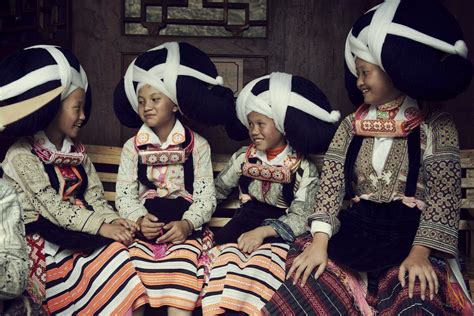The tapestry of Chinese history is interwoven with the threads of numerous indigenous groups, each with its distinct language, culture, and traditions. These native people have played an integral role in shaping the fabric of modern China, yet their stories often remain untold.

Diversity and Distribution
China is home to 56 ethnic groups, including the dominant Han Chinese, who constitute over 90% of the population. The remaining 55 ethnic groups, collectively known as “minority nationalities,” are distributed across diverse landscapes, ranging from the rolling plains of the north to the rugged mountains of the southwest.
| Ethnic Group | Population (2020) | % of Total Population | Region |
|---|---|---|---|
| Han Chinese | 1,182,513,052 | 91.4% | Nationwide |
| Zhuang | 17,206,126 | 1.3% | Guangxi Zhuang Autonomous Region |
| Uygur | 12,585,134 | 1.0% | Xinjiang Uygur Autonomous Region |
| Hui | 10,569,032 | 0.8% | Nationwide |
| Miao | 9,343,333 | 0.7% | Guizhou, Hunan, Yunnan |
| Yi | 8,714,393 | 0.7% | Yunnan, Sichuan |
| Tibetan | 6,282,187 | 0.5% | Tibet Autonomous Region, Qinghai |
Language and Culture
The languages of China’s minority nationalities belong to various language families, including Sino-Tibetan, Altaic, Austroasiatic, and Tai-Kadai. While Standard Mandarin is the official language of China, many minority groups retain their own languages and dialects.
Cultural practices vary widely among the different ethnic groups. For instance, the Miao are known for their elaborate embroidery and silver jewelry, while the Yi practice a form of polyandry where a group of brothers shares a single wife.
History and Assimilation
The history of indigenous peoples in China has been marked by both assimilation and resistance. Over time, many minority groups have adopted aspects of Han Chinese culture, including their language, dress, and customs. However, others have fiercely maintained their distinct identities and traditions.
In recent years, the Chinese government has implemented policies aimed at preserving and promoting the cultures of minority nationalities. These policies include the establishment of autonomous regions and the protection of cultural heritage.
Challenges and Opportunities
Despite these efforts, indigenous peoples in China face ongoing challenges. These include:
- Linguistic and cultural discrimination
- Economic disparities
- Environmental degradation
- Loss of traditional lands
However, there are also opportunities for indigenous peoples to thrive and contribute to the broader society. These include:
- Cultural tourism and creative industries
- Sustainable development and natural resource management
- Advocacy for cultural rights and self-determination
Case Study: The Yi People
The Yi people are one of the largest minority nationalities in China, with a population of over 8.7 million. They inhabit the mountainous regions of southwest China, primarily in Yunnan and Sichuan provinces.
Like many other indigenous groups, the Yi have faced challenges such as assimilation and land loss. However, they have also made significant strides in preserving their culture and traditions.
In 2008, the Yi Autonomous Prefecture of Liangshan was established, giving the Yi a greater degree of self-governance and autonomy. The prefecture has implemented numerous cultural preservation initiatives, including the establishment of museums and cultural centers.
The Yi people are also renowned for their expertise in traditional medicine and craftsmanship. Their knowledge of medicinal plants and herbs has been passed down through generations and is still widely utilized today.
Common Mistakes to Avoid
When discussing indigenous peoples in China, it is important to avoid certain common mistakes:
- Assuming that all indigenous peoples are the same. Each ethnic group has its own distinct language, culture, and history.
- Generalizing about indigenous peoples. It is incorrect to assume that all indigenous peoples are poor, uneducated, or traditional.
- ** Ignoring the challenges faced by indigenous peoples.** Assimilation, discrimination, and environmental degradation are just a few of the challenges that indigenous peoples face.
- Romanticising indigenous peoples. Indigenous peoples are not relics of the past but vibrant and dynamic communities with their own challenges and aspirations.
Why Indigenous Peoples Matter
Indigenous peoples play a crucial role in the social, cultural, and ecological fabric of China. Their knowledge, traditions, and languages contribute to the richness and diversity of Chinese society.
Moreover, indigenous peoples often possess valuable knowledge of natural resources and sustainable practices. Their involvement in conservation and environmental protection is essential for the long-term well-being of China and its people.
How Indigenous Peoples Benefit China
The inclusion and empowerment of indigenous peoples benefit China in various ways:
- Cultural diversity and heritage. Indigenous peoples add to the cultural tapestry of China, enriching the nation’s identity and heritage.
- Innovation and creativity. Indigenous knowledge and traditions can inspire new solutions to challenges in areas such as medicine, agriculture, and renewable energy.
- Economic development. Cultural tourism and traditional crafts provide opportunities for economic growth and employment in indigenous communities.
- Sustainable development. Indigenous peoples often have a deep understanding of their local environment and can contribute to sustainable resource management and conservation efforts.
Conclusion
The native peoples of China are a vibrant and diverse tapestry of cultures and traditions. Their journey has been marked by assimilation, resistance, and ongoing challenges. However, they continue to play a vital role in the social, cultural, and ecological fabric of the nation. As China moves forward, it is essential to recognize, support, and empower its indigenous peoples, ensuring that their voices, knowledge, and traditions continue to enrich and inspire the country for generations to come.
